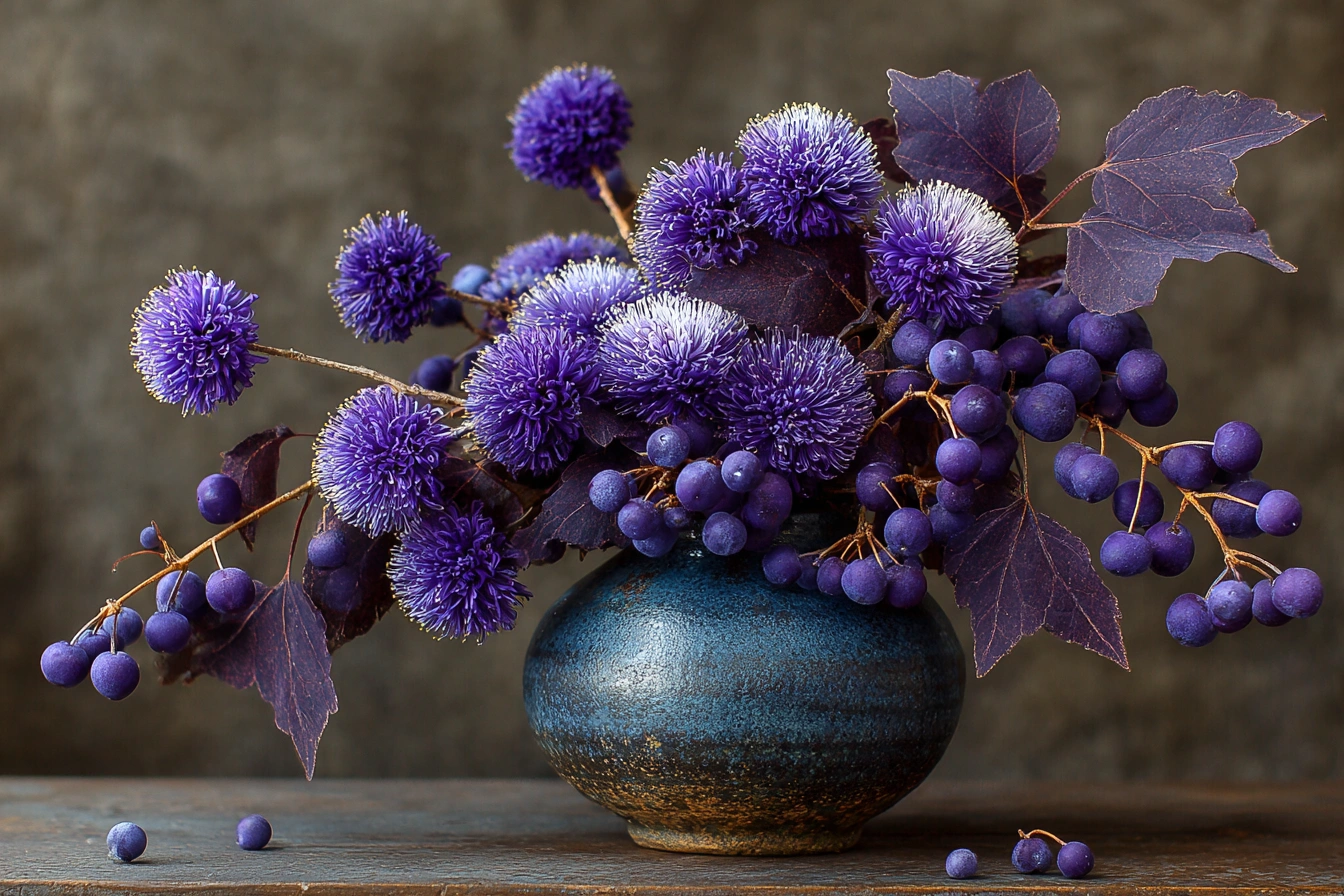
The Symbolism of Purple Flowers
Purple flowers have long been associated with rich symbolism and meanings across various cultures and historical contexts. The color purple is often considered to represent royalty, spirituality, and creativity, making bouquets with purple flowers particularly impactful. Many cultures have embraced these meanings, solidifying the color’s esteemed place in the natural world.
One of the most notable purple flowers is lavender, which is commonly linked to calmness and tranquility. Historically, lavender was used in ancient times for its aromatic properties, and its violet blooms are emblematic of purity and devotion. Moreover, lavender can symbolize love and fidelity, making it an excellent choice for romantic bouquets.
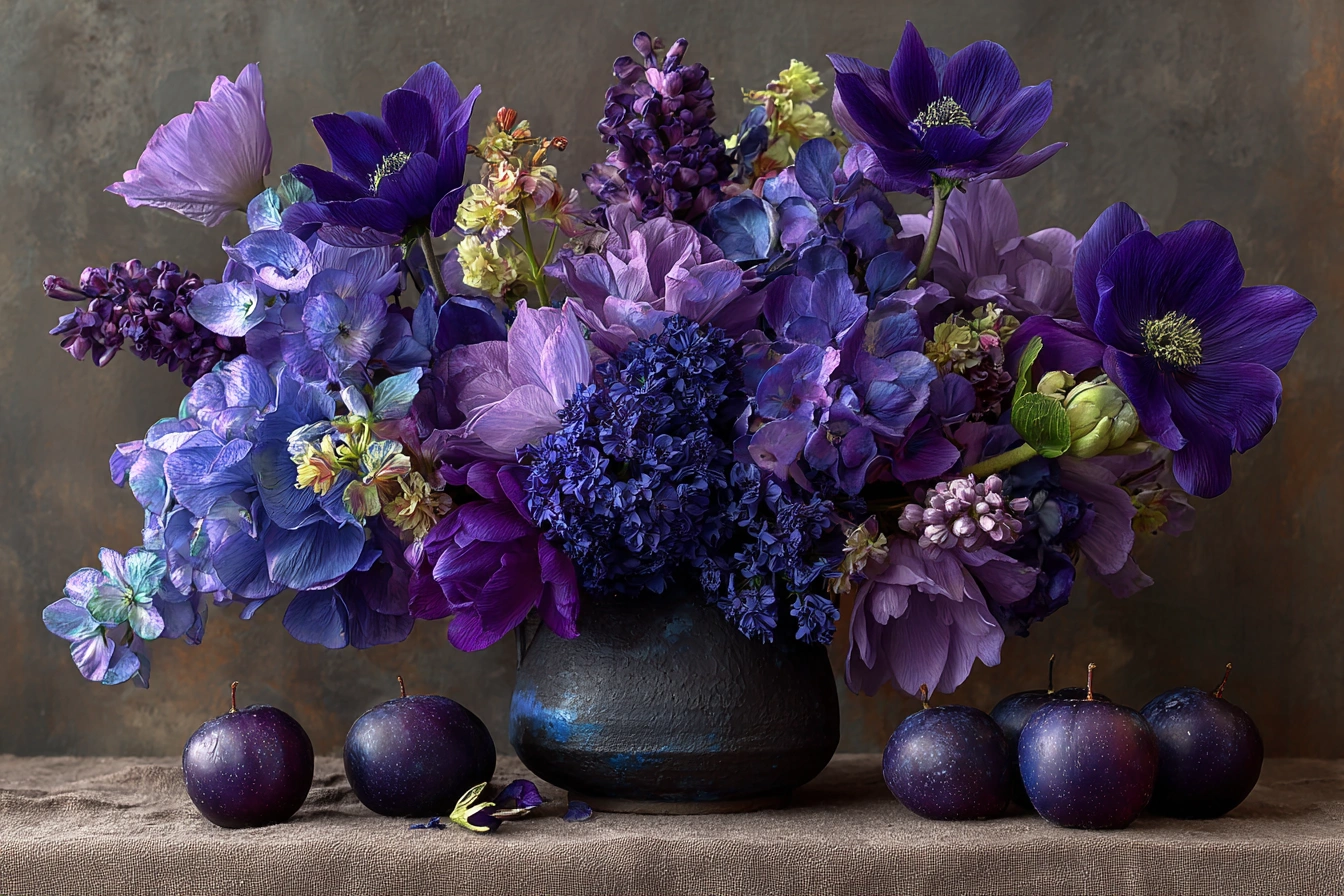
Another significant flower is the lilac, which blooms in various shades of purple. Lilacs are often associated with the emotions of youth and innocence, evoking memories of cherished moments. In floriography—the language of flowers—lilacs represent the first feeling of love, showcasing their romantic connotations within purple flower bouquets. Similarly, violets have a profound symbolic history; they are often linked to modesty and humility. These flowers are frequently used in arrangements to convey deep affection and loyalty.
In various spiritual traditions, purple flowers represent a connection to the divine and the mysteries of the universe. The color is frequently associated with spiritual awareness and higher consciousness, making purple flowers meaningful components in rituals and celebrations. Collectively, the symbolism attributed to these flowers resonates with themes of love, passion, and respect, enhancing the significance of bouquets that feature purple hues. Thus, selecting bouquets with purple flowers can communicate valuable sentiments, enriching personal connections and celebrations alike.
Common Purple Flowers and Their Meanings
Purple flowers have long been associated with a range of meanings, often symbolizing elegance, mystery, and enchantment. Among the most popular choices are orchids, hydrangeas, and purple roses, each distinguished by their unique traits and emotional significance.
Orchids are perhaps one of the most exquisite purple flowers. They symbolize beauty, strength, and luxury, making them an ideal choice for special occasions. The rich hues of purple in orchids convey sophistication, and their diverse shapes and sizes add to their allure. This makes them a favored option in lavish bouquets as well as for personal gifts that express deep appreciation and admiration.
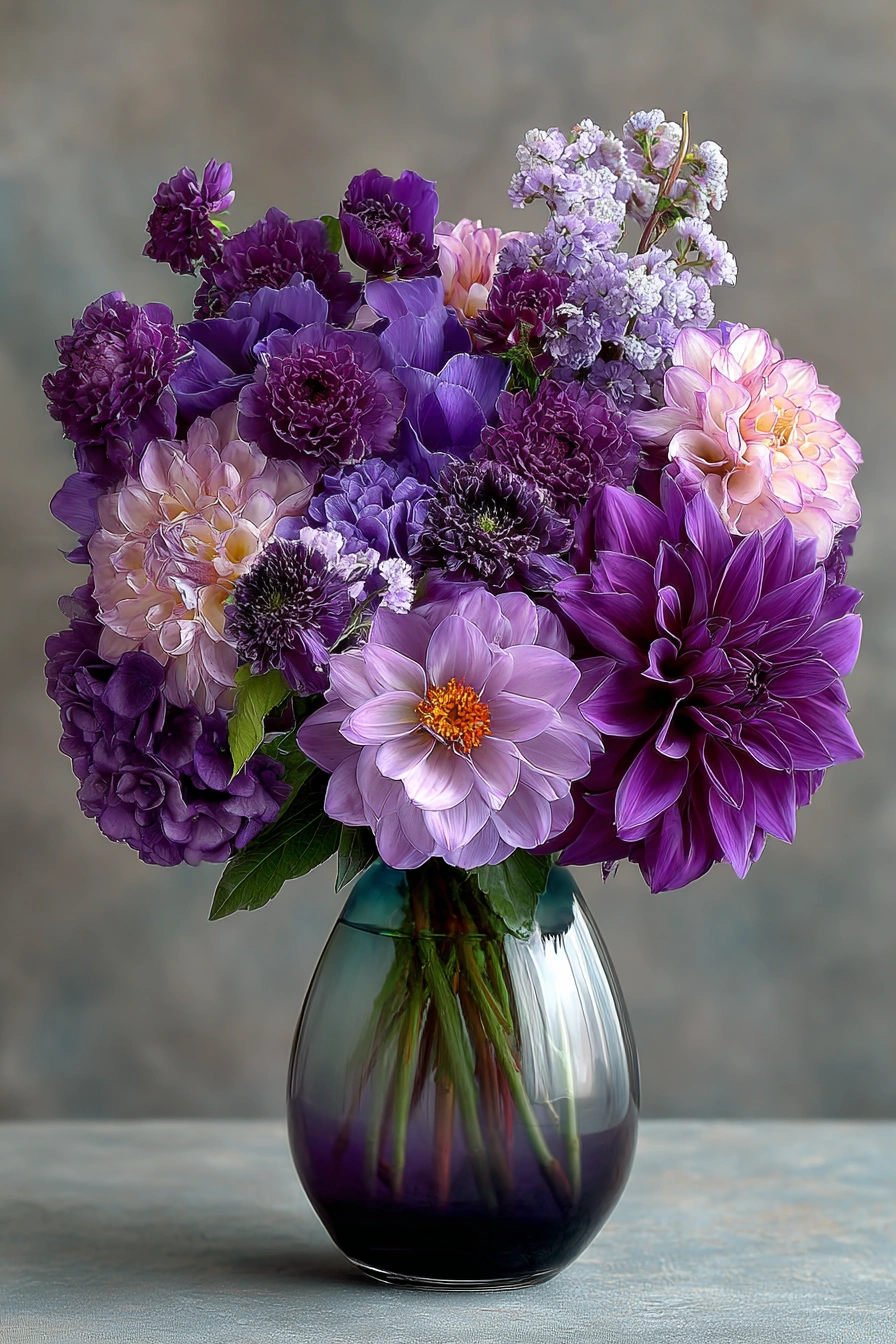
Hydrangeas, characterized by their large, round flower heads and lush foliage, also carry profound meanings. These blossoms often represent gratitude, grace, and abundance. The shades of purple in hydrangeas can range from soft lavender to deep violet, each shade invoking its unique emotional response. Hydrangeas serve as a wonderful addition to bouquets with purple flowers, particularly in arrangements aimed at showing heartfelt thanks or appreciation.
Purple roses are another notable flower, traditionally representing love at first sight, enchantment, and mystery. Their captivating color captivates and draws attention, and they are often used in romantic bouquets. Opting for purple roses can convey a sense of admiration or an expression of profound love—making them a thoughtful gift for someone special, particularly during significant life events.

These flowers—orchids, hydrangeas, and purple roses—illustrate the endless potential of bouquets with purple flowers. Their meanings can guide individuals in selecting the perfect floral arrangement for various occasions, ensuring that each bouquet is imbued with both beauty and heartfelt significance. By understanding what do purple flowers mean, one can make more informed choices when selecting flowers that resonate with intended sentiments.
Creating Beautiful Bouquets with Purple Flowers
Creating stunning bouquets with purple flowers can add a touch of elegance and sophistication to any occasion. Purple flowers are often associated with nobility, grandeur, and sentimentality, making them an ideal choice for various events. To craft an alluring bouquet, it is essential to consider the arrangement and color harmony. A balanced mix of colors can enhance the overall aesthetic of your bouquet. Pair purple flowers with white blooms such as lilies or roses to create a classic look, or incorporate vibrant greens to add a fresh contrast.
When selecting purple flowers for your bouquet, it is crucial to choose varieties that resonate with the occasion. For weddings, lavender, and purple hydrangeas symbolize love and devotion, whereas for anniversaries, deep purple orchids convey admiration and beauty. If you are preparing a bouquet for a more somber event, consider using lighter hues of purple, such as lilacs, which can evoke a sense of peace and remembrance.
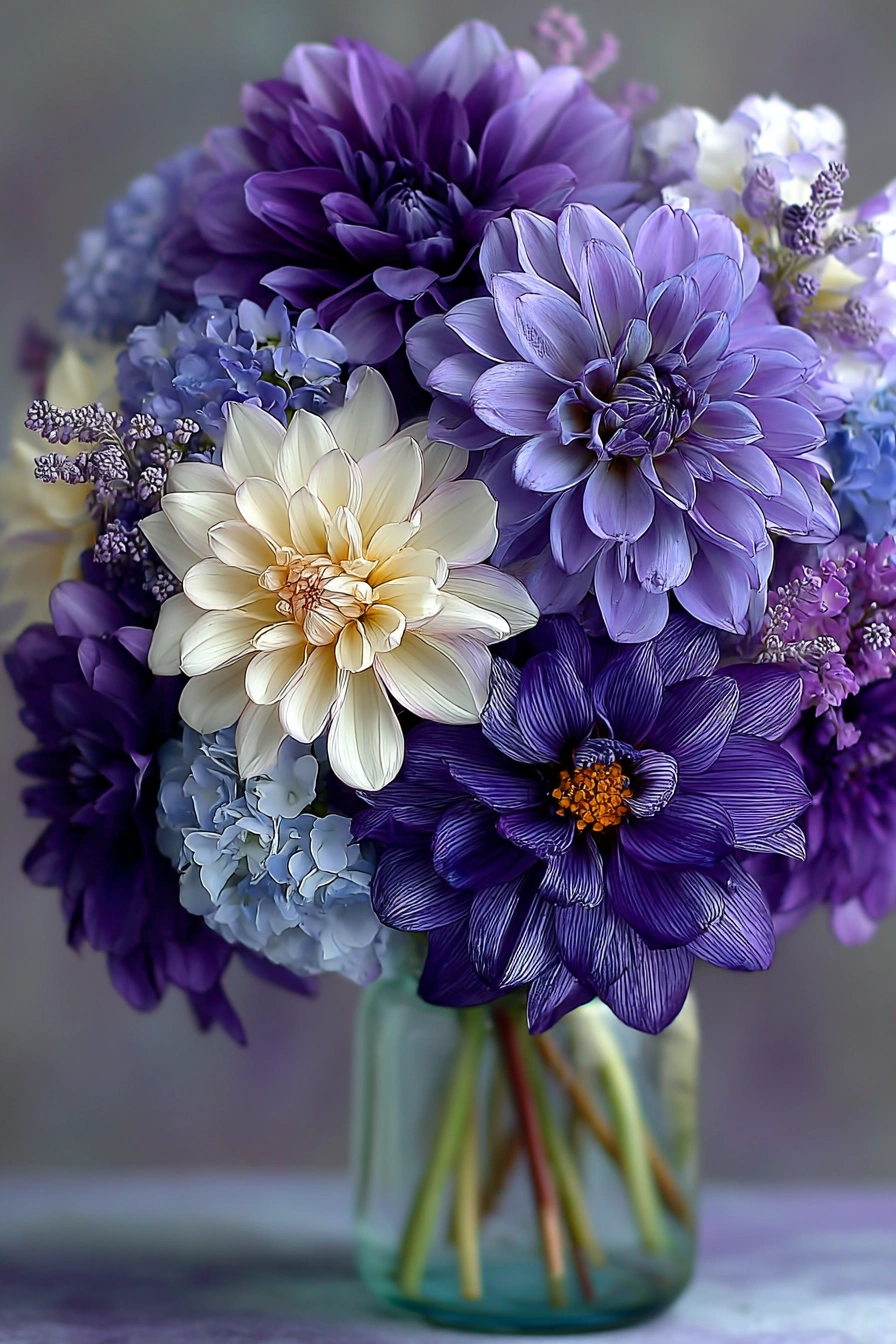
The addition of greenery in your bouquet can also significantly enhance its visual appeal. Eucalyptus, ferns, and ivy not only add texture but also create a lush backdrop that can elevate the allure of the purple flowers. Using greenery strategically can help fill empty spaces within the bouquet, ensuring a fuller and more balanced appearance.
Visual aids such as guides or images of popular bouquet styles can greatly enhance your understanding of flower arrangements. For instance, cascading bouquets featuring purple flowers can bring a dramatic flair, while posy-style bouquets offer a classic and compact alternative. In weaving together these elements, one can create breathtaking bouquets that genuinely reflect the intended sentiment and significance of purple flowers.
Cultural Significance of Purple Flowers in Different Traditions
Purple flowers have a deep-seated cultural significance in various traditions globally, often symbolizing values such as spirituality, royalty, and love. In many cultures, the color purple is associated with nobility and grandeur, making bouquets with purple flowers a popular choice for significant events and ceremonies. For instance, in ancient Roman society, only the elite could afford to wear purple garments, which elevated the status of purple flowers in their rituals and celebrations.
In religious contexts, purple flowers often play an important role. In Christianity, for example, the use of purple blooms during Lent signifies penance and reflection. Additionally, purple orchids are frequently used during weddings in many cultures, representing love, beauty, and strength. The spiritual connection to purple flowers can vary based on regional traditions, with some cultures relating them to divine love or significant life transitions.
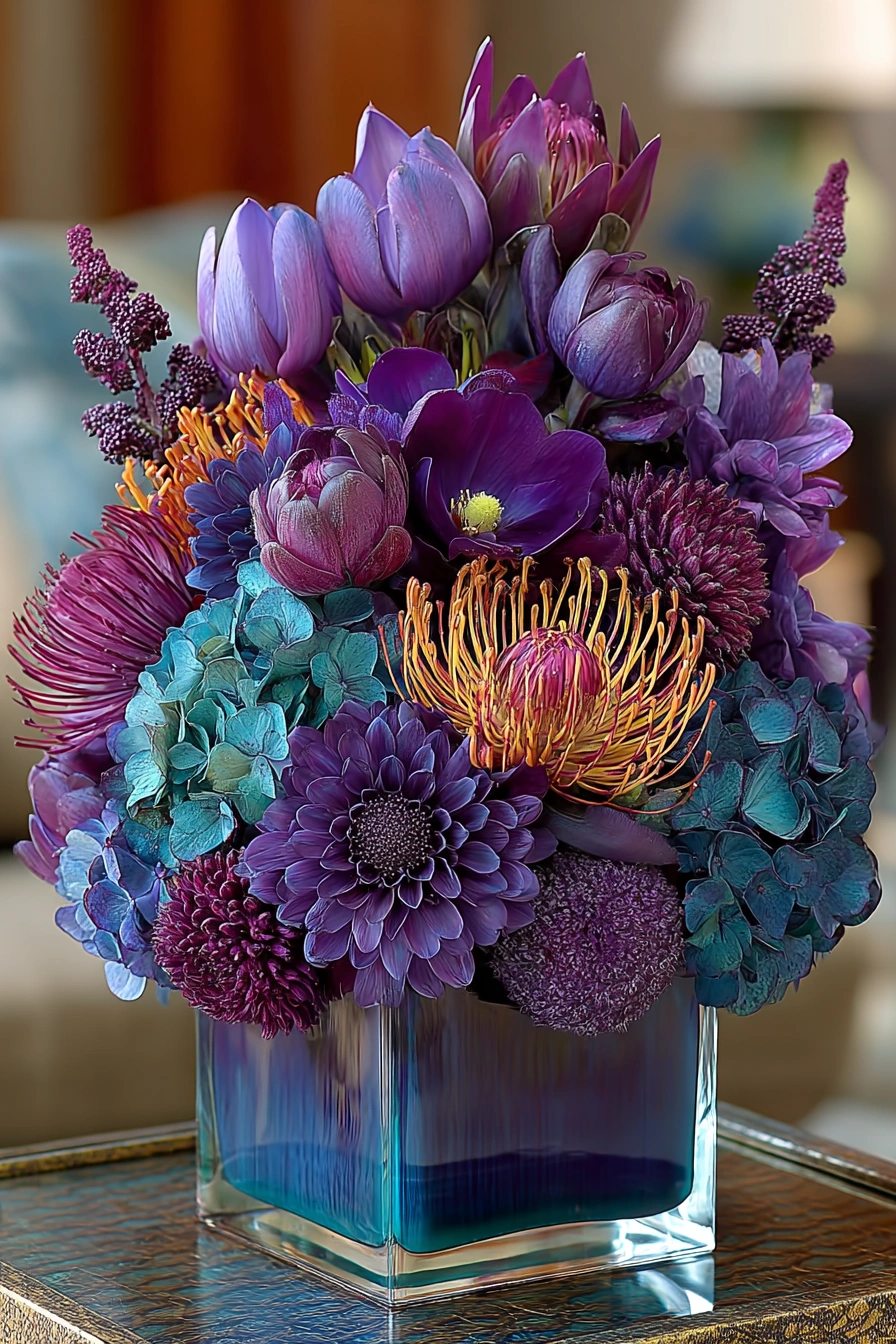
In Eastern cultures, purple flowers are often integrated into traditional celebrations. In Japanese culture, for example, the Wisteria flower is seen as a symbol of love and tenderness, often found in festivals celebrating romance. Similarly, in countries like China, the color purple may signify wealth and prosperity, thereby encouraging individuals to give bouquets with purple flowers during important life events, such as childbirth or graduation.
Furthermore, the meanings associated with purple flowers can change significantly based on regional customs. For example, while lavender might represent devotion in Western cultures, in certain Middle Eastern traditions, it may symbolize tranquility and peace. This variation in interpretation emphasizes the complex relationship between symbols and their meanings, making purple flowers a versatile choice for personal and cultural expressions.
Ultimately, the cultural significance of purple flowers reflects the universal language of flora. Whether they are given as gifts, used in ceremonial occasions, or admired in nature, their meanings deeply resonate with people across different geographical and cultural landscapes.
